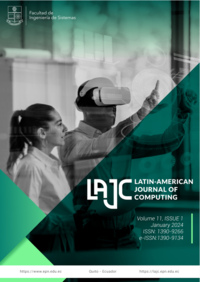Essentially non-oscillatory schemes applied to Buckley-Leverett equation with diffusive term
Keywords:
Numerical methods, Immiscible two-phase fluid, Petroleum flowAbstract
The purpose of this work was to investigate the flow of two-phase fluids via the Buckley-Leverett equation, corresponding to three types of scenarios applied in oil extraction, including a diffusive term. For this, a weighted essentially non-oscillatory scheme, a Runge-Kutta method and a central finite difference were computationally implemented. In addition, a numerical study related to the precision order and stability was performed. The use of these methods made it possible to obtain numerical solutions without oscillations and without excessive numerical dissipation, sufficient to assist in the understanding of the mixing profiles of saturated water and petroleum fluids, inside pipelines filled with porous material, in addition to allowing the investigation of the impact of adding the diffusive term in the original equation.
Downloads
Published
Issue
Section
License
Copyright Notice
Authors who publish this journal agree to the following terms:
- Authors retain copyright and grant the journal right of first publication with the work simultaneously licensed under a Creative Commons Attribution-Non-Commercial-Share-Alike 4.0 International 4.0 that allows others to share the work with an acknowledgement of the work's authorship and initial publication in this journal.
- Authors are able to enter into separate, additional contractual arrangements for the non-exclusive distribution of the journal's published version of the work (e.g., post it to an institutional repository or publish it in a book), with an acknowledgement of its initial publication in this journal.
- Authors are permitted and encouraged to post their work online (e.g., in institutional repositories or on their website) prior to and during the submission process, as it can lead to productive exchanges, as well as earlier and greater citation of published work.
Disclaimer
LAJC in no event shall be liable for any direct, indirect, incidental, punitive, or consequential copyright infringement claims related to articles that have been submitted for evaluation, or published in any issue of this journal. Find out more in our Disclaimer Notice.










